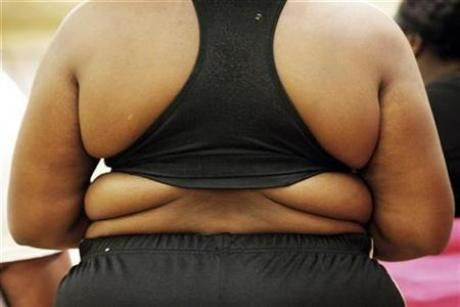CDC Findings Show a Rise in Obesity Rates in America

Obesity is a problem in every state in America, according to U.S. obesity trends data released on Tuesday by the Centers for Disease Control and Prevention (CDC).
The latest trend data show that the rate of obesity in the U.S. is still high and that 12 states have reported an obesity prevalence of 30 person or higher among adults.
The data is from the most recent Behavioral Risk Factor Surveillance System or BRFSS. BRFSS is a state-based phone survey that collects health information from approximately 400,000 people who are at least 18.
Those states with an obesity prevalence of 30 or more are Alabama, Arkansas, Kentucky, Louisiana, Michigan, Mississippi, Missouri, Oklahoma, South Carolina, Tennessee, Texas, and West Virginia.
In 2009, only nine states reported an obesity rate of 30 percent or more. Those states are Alabama, Arkansas, Kentucky, Louisiana, Mississippi, Missouri, Oklahoma, Tennessee, and West Virginia, the CDC said.
No state had a prevalence of obesity less than 20 percent last year. However, 36 states last year had a prevalence of 25 percent or more, which means that no state met the national Healthy People 2010 goal to lower obesity prevalence to 15 percent within the past decade, according to CDC researchers.
State obesity rates are still high, said CDC Director Dr. Thomas Frieden in a statement. Some of the leading causes of death are obesity-related - heart disease, stroke, type 2 diabetes and certain types of cancer. We must continue our efforts to reverse this epidemic.
An adult is considered obese if his or her Body Mass Index, or BMI, is 30 or above. The BMI measures body fat based on an individual's height and weight.
The CDC's findings are similar to those included in the Trust for America's Health and the Robert Wood Johnson Foundation report last week.
The report called F as in Fat: How Obesity Threatens America's Future 2011 also stated that 12 states have an adult obesity rate above 30 percent. Researchers with that report also found that 16 states had an increase in the adult obesity rate over the past year.
The state of Mississippi, in both studies, had the highest rate of obesity of 34 percent.
And it seems like obesity is affecting certain regions more than others.
The CDC's data show that the South had the highest rate of obesity at 29.4 percent. For the Midwest that rate is 28.7 percent. The Northeast rate is 24.9 percent, and the West had a rate of 24.1 percent.
Health professionals have said that obesity is associated with other health problems such as diabetes and high blood pressure.
The F as in Fat report shows that that the rates of both diseases have risen over the last two decades, as since 1995, diabetes rates have doubled in eight states.
At that time, only four states had diabetes rates above 6 percent. Today, 43 states have diabetes rates more than 7 percent, and 32 have rates above 8 percent, according to the F as in Fat report. The hypertension rates in 37 countries about 20 years ago were more than 20 percent. Today, that report shows that every state is has a hypertension rate more than 20 percent, with nine more than 30 percent.
It will take time and resources to win in the fight against obesity, said Dr. William Dietz, director of CDC's Division of Nutrition, Physical Activity and Obesity in a statement. This epidemic is complex and we must continue to change the environments that make it hard to eat healthy, and make it hard for people to be active. By doing this, we not only help today's adults, we also invest in our children and grandchildren, so they won't have to endure this serious and costly health burden.
© Copyright IBTimes 2025. All rights reserved.






















